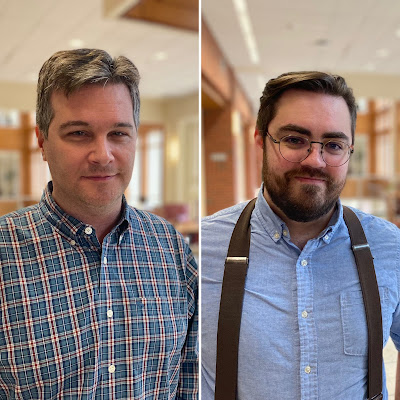EATIN - A Place Where Engineering Meets Service
By Lea Morisato
Industrial and Systems Engineering Senior
When I was a freshman, there were several technical engineering organizations that I could join, but I had to go to other areas in the university to find a community service group. As engineering students, many of us are constantly strapped for time; thus, the organizations we participate in are typically those where we can refine our skills. It was not until my sophomore year that one of my professors, Dr. Randa Shehab, put out a call for a group of students to resurrect an organization that had previously worked with the Regional Food Bank of Oklahoma. I joined as an officer and after one volunteering session, I thought that as engineers, there is more we can do to help our community. The next semester, I became president of the organization with the goal of promoting healthy growth and blending community service with technical aspects in order to make one club that could satisfy several needs, both for the student volunteer and the nonprofit we were serving. I believe Engineers Assisting Those In Need provides a place where students of all backgrounds, classifications, and majors can come together to learn about continuous improvement while applying the valuable skills they are learning in the classrooms to help nonprofits serve more people.
To make this vision a reality, I focus on cultivating targeted volunteering sessions, where students look for specific sources of inefficiencies and identify/report areas needing improvement from a volunteer's perspective. It is vital for nonprofits to get this feedback, because while a supervisor may know what steps need to happen, they may not understand what the volunteers think or see as they go through a shift. The goal is that every time we volunteer somewhere, we are able to provide feedback to the organization to allow their future volunteers to be even more efficient. This tactic worked well for people that were free over the weekends, however, we found so much more we could do to help our community that we launched project teams. These teams work on a continuous improvement project over several months to apply their skills in a team environment. Each project was procured personally and is under close supervision to ensure the team is working effectively and that any roadblocks become a learning experience. We are available to volunteer with all non-profit organizations in our community, and are always looking for new ways to serve.
We have gained several new project partners over the past year, allowing us to have six project teams finish their work by this summer (2018). These partners include Meals on Wheels, the OU Food Pantry and Hope Retreat Ranch. For Meals on Wheels, we researched the feasibility of implementing a grocery route in addition to the regular meals they are providing, an evaluation of their volunteer management software and the development of a program with the ability to optimize driving routes to ensure volunteers have a good experience and return for future driving sessions.
For the OU Food Pantry, we coordinated an inventory day to record all of the items in the store, as well as a layout redesign to optimize the items after the pantry received a new shelf.
Lastly, for Hope Retreat Ranch, we designed playground equipment for kids of all ages, sizes, and disabilities that was built on-site in one day during our first volunteer retreat. Each project is designed and procured to add value to the organization and in the way that they need it. I am a certified Lean Six Sigma Green Belt and am pursuing my Black Belt this spring, which means I am specially equipped to identify, target and eliminate waste. I intend on sharing a lot of this knowledge with the group’s members to ensure we are continuously improving as a group.
Overall, the organization has proven to be more successful this year than I could have ever imagined. We have had more than 100 people join our orgsync portal; we are now on Facebook, Twitter and Instagram; we have conducted volunteering sessions with the Regional Food Bank of Oklahoma, Moore Food and Resource Center and OU Food Pantry; we also added three new project partners; and we had six project teams. We opened our organization to all majors, because we want to include anyone who wants to serve the community in creative ways! All of this progress happened in one year, and we still have so much we want to do!
We hope to expand to other organizations by continuing both our community service sessions as well as our project teams. We also hope to grow in size and coordinate with other groups to become the service hub for OU Engineering. Our mission is to get more engineers involved in community outreach, and the more people we can reach the better!
I have one more year of service as president of this organization, and I can’t wait to see how far we go. It is truly a place where engineering meets service, and I am so grateful for all of the opportunities we have had to serve others and for all the engineers that are getting involved in order to help make their community a better place. I believe community outreach is vital, and it is incredibly important to give back the places where we live and work. I am truly blessed to be able to encourage more engineers to take a break from the textbooks and apply their valuable skills in such a special way, and I believe that everyone can and should be involved with EATIN in one way or another.



